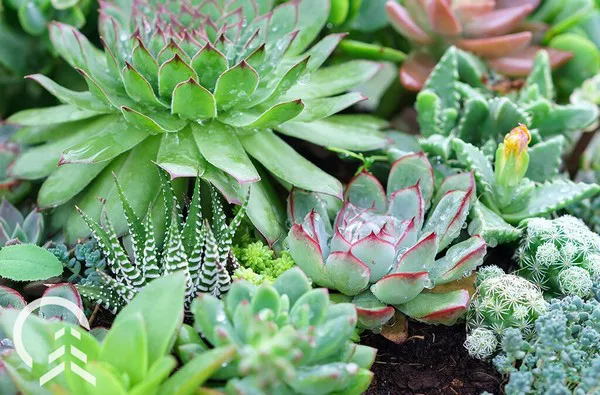Succulents have become immensely popular in recent years, and for a good reason. Their unique and exotic appearance, along with their ease of care, makes them a favorite among both novice and experienced gardeners. One fascinating aspect of succulents is their ability to propagate from leaves.
Understanding Succulents
Before delving into the process of replanting succulent leaves, it’s essential to understand what succulents are. Succulents are a diverse group of plants that have adapted to arid environments by storing water in their fleshy leaves, stems, and roots. These unique adaptations make them hardy and drought-tolerant, which is one of the reasons they are so beloved by gardeners.
Selecting the Right Leaves
When it comes to replanting succulent leaves, not just any leaf will do. It’s crucial to choose healthy, mature leaves from the parent succulent plant. Look for leaves that are plump, free from damage or disease, and well-hydrated. Avoid leaves that are too small or too old, as they may not yield successful results. Keep in mind that not all succulents are equally suited for leaf propagation, so it’s essential to research the specific species or variety you are working with.
Preparing the Leaves
Once you’ve selected the right succulent leaves, it’s time to prepare them for propagation. Carefully remove the leaves from the parent plant by gently twisting them from the stem. Be cautious not to damage the leaves in the process, as any injuries can hinder the success of the propagation.
Allow the separated leaves to air dry for a day or two, which allows the cut end to callus. Callusing prevents the leaves from rotting when placed in the soil, a critical step in ensuring a successful replanting process.
Choosing the Right Soil Mix
Selecting the appropriate soil mix is crucial for the successful propagation of succulent leaves. Succulents thrive in well-draining soil, which helps prevent overwatering and root rot. A recommended mix is one part potting soil, one part perlite, and one part coarse sand. This combination promotes aeration and proper drainage, creating an ideal environment for succulent growth.
Planting the Leaves
With your leaves prepared and your soil mix ready, it’s time to plant your succulent leaves. Follow these steps for a successful planting process:
1. Fill a shallow tray or container with your prepared soil mix.
2. Place the prepared leaves on top of the soil mix, ensuring that the cut end is in contact with the soil.
3. Gently press the leaves into the soil to secure them in place.
4. Water the leaves lightly to settle the soil and initiate the rooting process. Be cautious not to overwater, as succulents are susceptible to root rot if they remain too wet.
Providing the Right Environment
Succulents thrive in specific environmental conditions, and providing them with the right setting is crucial for successful leaf propagation. Here are some key factors to consider:
Lighting: Succulents require bright, indirect sunlight to grow successfully. Place the container of planted leaves in a location where they can receive adequate light but are protected from harsh, direct sunlight.
Temperature: Most succulents prefer temperatures between 60°F and 80°F (15°C to 27°C). Avoid exposing them to extreme heat or cold, as it can stress the plants.
Humidity: Succulents prefer low humidity environments, so it’s essential to keep the humidity level moderate. A dry environment helps prevent issues like mold and rot.
Air Circulation: Adequate air circulation is necessary to prevent the development of mold and fungus on the leaves. Ensure there is some airflow around your propagating succulent leaves.
Watering and Maintenance
Succulent leaves require minimal care once they are planted, but it’s essential to follow specific guidelines for watering and maintenance. Here are some key tips:
Water sparingly: Only water when the soil is dry to the touch, typically once every 1-2 weeks. Overwatering can lead to rot, so it’s crucial to err on the side of underwatering.
Be patient: Succulent leaf propagation takes time. It can take several weeks to months for new growth to appear. Be patient and resist the urge to disturb the leaves during this period.
Transplanting: Once new plantlets have developed at the base of the original leaf, you can gently separate and transplant them into individual pots. Be sure to use a well-draining succulent soil mix.
Common Problems and Solutions
Replanting succulent leaves may not always go smoothly, but understanding common issues and their solutions can help you achieve better results. Some common problems include:
Leaf Rot: If you notice signs of rot on your leaves, remove the affected ones immediately, and adjust your watering habits to prevent overhydration.
Lack of Growth: If your leaves show no signs of growth after several months, it may be due to inadequate light or an unfavorable environment. Adjust their placement for better results.
Conclusion
Replanting succulent leaves can be a rewarding and cost-effective way to expand your succulent collection. By carefully selecting the right leaves, providing suitable soil and environmental conditions, and practicing proper care and maintenance, you can successfully propagate your favorite succulents. Remember that patience is key, as succulent leaf propagation is a slow but fascinating process. With time and dedication, you can enjoy a thriving collection of these unique and beautiful plants in your own home or garden.


